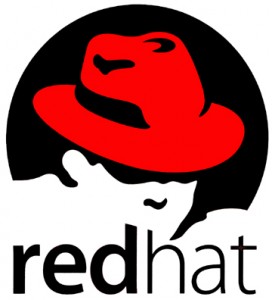 Red Hat, probably the biggest Linux Company in the world, has announced its strategy for big data. In addition, Red Hat has also announced the contribution to have Red Hat Storage plugin for Hadoop to the Apache open source community.
Red Hat, probably the biggest Linux Company in the world, has announced its strategy for big data. In addition, Red Hat has also announced the contribution to have Red Hat Storage plugin for Hadoop to the Apache open source community.
Red Hat is working with the Open Cloud community to support customers that use a hybrid cloud environment of open and does so through projects such as OpenStack and OpenShift Origin to help meet the current and future expectations of the companies in the field of big data. Focused on three main areas, Red Hat seeks to expand its range of products in order to offer advanced solutions and application platforms for enterprise-class infrastructure, as well as collaboration with leading vendors and solution integrators for the analysis of big data.
Red Hat solutions for big data infrastructures are Red Hat Enterprise Linux and Red Hat Storage. The former offers the ability to develop, integrate and protect big data applications in a reliable and easily scalable way. All this can be done in the cloud, where it is easier to store, aggregate, normalize and integrate data from distributed sources on different platforms, whether they are implemented as physical resources, virtual or cloud.
Red Hat Storage based on the popular Red Hat Enterprise Linux operating system and consolidated distributed file system GlusterFS can be used to group servers in a standard economic way and thus provide a convenient storage solution that is scalable and reliable for the big data.
Additionally, Red Hat announced general availability of the next minor release of Red Hat Enterprise Linux 6, Red Hat Enterprise Linux (RHEL) 6.4 that has been optimized for performance, stability and flexibility across physical, virtual and cloud environments.
As a platform for big data and not just a destination for data storage, enterprise storage solutions need to deliver cost-effective scale and capacity; eliminate data migration and incorporate the ability to grow without bound; bridge legacy storage silos; provide global accessibility of data; and protect and maintain the availability of data.
In order for that roundtrip to be possible, Red Hat is working effectively in the open source and public cloud; it will fully support the JBoss Midleware Apache Hive Connector, allowing developers to work on SQL query-oriented coding environment; and Red Hat will enhance JBoss to interoperate with MongoDB and other NoSQL databases.
Many companies in the world use public cloud infrastructures such as Amazon Web Services for the development, testing, pre-production for their big data projects. They then transferred the results into private clouds and edit their very large data sets analytics applications. In this case, an open hybrid cloud environment gives companies the ability to migrate workloads from one cloud type to another without having to reprogram their applications.